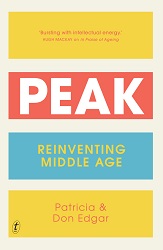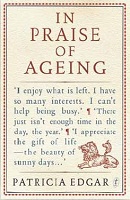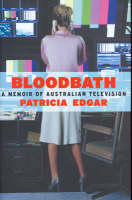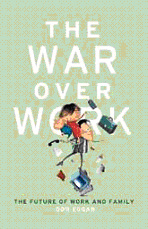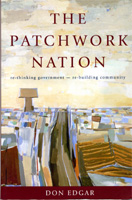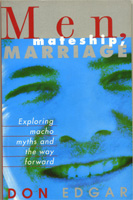La Trobe University Lecture: 'Mr Mildura: Reg Etherington'
Held in Mildura 28-8-2011
Dr. Patricia Edgar :
For more than three-quarters of a century Reg Etherington was actively engaged in this city, Mildura, as a business-man, City Councilor, as Mayor, Chairman of the Council Finance Committee (for many years) and as Chair of a host of other cultural, local government and community initiatives. Though his contribution was much wider than to his home town, he left such a mark on Mildura's development that he came to be known by friends and colleagues as Mr Mildura, or Mr Fix-it and, by others, Mr Right. He was also my father and today Don and I aim to give you some insight into the nature of the man and to talk about some of the work he did in the community that is not so well known.
Reg was born in Faversham, Kent UK on 28th of January 1905. His father was a carpenter and joiner; he was working-class British. His parents decided to migrate to Australia in 1912 when Reg was 7. He was the fourth child in a family of six children. One more child would be born in Australia. They settled in Thornbury a northern suburb of Melbourne where Reg attended Wales Street State Primary School and then University High School in Melbourne on scholarship. He learnt to play the clarinet.
When he left school he decided to become apprenticed as a watchmaker and jeweler. He was working in Melbourne when he heard about an opportunity. Mr Horace Hammerton in Mildura was seeking an apprentice and was offering 5 pounds a week and a promise of a share of the profits. Reg applied and got the job. It was December 1, 1924; he was 19 years old.
While working for Mr. Hammerton, Reg studied optometry by correspondence part-time, obtaining the degree of Fellow of the Victorian Optical Association. He was number 21 on the register and the first qualified resident optometrist in Mildura.
Four years after his arrival in Mildura, and after surviving typhoid fever, Reg decided he would settle here. He had his eye on a young woman (Eva May Ellis) he had met singing in the Methodist Church Choir. She worked at White's shoe store. They decided to marry and Reg wanted some security for the future he planned with Eva, so he asked Mr. Hammerton for a formal agreement, acknowledging what had been promised to him when he came to Mildura. But Hammerton wasn't prepared to give him a written agreement. 'Don't be silly Reg', he said. So Reg gave a week's notice and set up in business against his employer. 'I'll see you go broke', was Hammerton's response.
It was 1929 and Reg was aged 24 years. It was an audacious move but typical of him. He took risks, he worked hard, and he had a strong will; when challenged he would be determined to succeed. He did not lack in confidence. While others waited for him to go broke, Reg prospered. His focus moved from watch-making to the optical business but at the same time he bought into Wilson's jeweler's business. In 1932 he brought his older brother Jim from Melbourne to run the jewelry business which remains in Deakin Avenue today.
In the late thirties Reg bought a fruit block in Karadoc Avenue and built up an orange orchard and poultry farm. He brought his younger brother Alec up from Melbourne to run the block.
Reg had a way with people. He was gregarious, he had a great laugh; he loved a good yarn. Although the thirties were very tough years to be creating a business, Reg earnt a loyal following. His working class roots gave him an understanding and easy connection with men who labored with their hands and minds, as men in such a pioneering agricultural settlement as Mildura did. The women also liked him. He would joke and he was kind. He was generous to his clients; they paid when they could afford it.
Mildura at that time was a failing, salinated, dust bowl, a small town on the Murray River with few facilities. There were no paved roads or foot-paths, no sewage system, or sporting facilities.
He married Eva on 7 October 1931. They moved into 13 Sarnia Avenue, the home they would live in together for 67 years. They paid 500 pounds for the house and put down a deposit of 50 pounds. They had 10 pounds over in their kitty and Eva's housekeeping budget was 2 pounds a week. Mum loved flowers and Reg created a garden for her at 13 Sarnia Avenue and entered a novice gardening competition soon after moving in. On the day of the judging he dug up the flowers from the backyard and replanted them in the front garden to make a good display. He won the competition and was very proud of the silver cup.
He planted a small Norfolk pine tree in the front garden which grew to a great height, well beyond the roof, lifting the pavement so it was difficult to move along the footpath at the side of the house. He would not trim it and the tree remained until after his death in 2000 when the house was sold. I think it was the tallest tree in the city of Mildura. It was a landmark and arriving in Mildura we always knew where our house was.
Reg and Eva had three daughters and I was the youngest.
I was a big disappointment in my father's life as, like all men of his generation, he desperately wanted a son to carry on the family name and to have a father/son relationship - take the boy shooting and fishing, show him the ropes, continue the family business. As the third daughter and final try, Reg had to reconcile to his daughters and his lack of a male heir, which he did admirably.
He was a very good father; strict but caring. We did not go to bed at night without a story, usually one he made up and although he seemed to be out every night of the week he was there at mealtimes and to put us to bed. He taught us to swim, ride horses, encouraged us to play musical instruments and we went regularly to the seaside at Glenelg for holidays. When the polio epidemic came Dad remained in Mildura but Mum and we kids went to live in Glenelg. Family was very important to him.
We lived in one room - the dining room next to the kitchen. (The lounge room was for visitors in those days). It had a fire in winter and was the only warm room in the house. The radio was there so after tea in the evening the family gathered there. Dad had a comfortable armchair and we sat around the table on rather uncomfortable dining chairs he had made. (He made all the furniture). Mum invariably knitted. We played cards, board games, listened to the radio and did our homework. Reg had the phone beside his chair and it seemed he was always on the phone.
I grew up in a household where politics were as familiar to me as the values of the Methodist Church where I went to Sunday School. It seemed nothing of any importance happened in Mildura that my father was not involved in, and there was no dirty business. He was straight and direct; he always had a clear vision of what he was on about and he gained support for his ventures by the sheer force of argument. I heard much of what went on over the phone without even knowing I was listening. I observed as men came to the house with their problems to seek my Dad's advice. Mildura was a community where everyone knew everyone. Growing up, it seemed everyone knew Reg Etherington.
My father retired from optometry in 1952 ( aged 47) so he could devote more time to public service and for more than the next 40 years that is what he did.
While Reg was committed to public service Eva was the same. Apart from her work as a housewife which she did exceptionally well (she was a great cook and washed and ironed clothes like they came out of a professional laundry) her interests were the Red Cross, the CWA, the Deaf Auxiliary, and the Church. She paid for and did the flowers in The Methodist Church every Saturday for 20 years from 1946-66.
I now realize my father and my family was unusual but when I was growing up in Mildura I took our life for granted. The tasks Reg took on weren't easy. Change is not a simple process. His causes often made him enemies rather than friends but he loved a challenge and the satisfaction he gained was in the tangible benefit he saw resulting from his political efforts.
Mildura bears his mark in its electricity system, its sealed roads and curbs, its Arts Centre and Art Gallery (which he got funded without initial cost to Council), the old Mildura Homestead, its Historical Society, the legacy of the Mildura Sculpturescape, the many charities he raised funding for. In later years when reflecting on life he once said to me, "I'm an initiator, that's my nature. So much was needed in Mildura. There is little in this town that was worthwhile, that I wasn't involved in.?
In October 1999 The Sunraysia Daily published a special issue to celebrate A Century of Sunraysia 1900 - 1999. In that publication there was a profile on Reg Etherington entitled Etherington vision was a treasure to behold.
'...His contribution to this community is immeasurable. He has served on Mildura City Council for 18 years including being Mayor from 1954 to 1956. During his time he was for seven years the Chairman of the Finance Committee and in this capacity he revolutionised techniques, making the process more efficient and more effective. Roads were greatly improved, all road sealing being taken right up to the gutters. Through him, the Mildura Electricity Supply was sold to the SEC to the greatest benefit of the community.
Without him we should not have had the Mildura Arts Centre. He went out on a limb making the building of the Arts Centre one of the key points in his platform, prepared to take the consequences and voters, to their eternal shame, voted against him. Now all agree that he was right and his vision is our treasure.
He was the government nominee on the building committee of the Victorian Arts Centre during the time of its planning and construction. Through him the Victorian Regional Galleries Group was established. He served for many years as President of the North-West Victorian Ballet Guild and saw that organisation make great progress.
He was Mayor at the time of the formation of the Mildura and District Historical Society, and became the foundation President, a position he was to hold for 29 years. Through him, the reconstruction of the Mildura Homestead became possible; he had a genius for knowing which were the best sources of funding. He was to chair the Homestead Committee for many years.
He served as a member of the Mildura Methodist Church Trust and was the key figure in getting the Wesley Church building a heritage listing. He served as President of the Mildura High School Advisory Council from 1961 to 1976, having been on that Council from 1951. One of the many projects he saw carried through was the building of the school's gymnasium.
He was chairman of MADEC from 1972 to 1974. Reg has a long association with Rotary, having served as president of Mildura Rotary and was District Governor in 1949. He was Worshipful Master of Mildura Lodge in 1943 and was chosen to be a foundation Master when Lodge Sunraysia was formed.
When Reg Etherington retired from the School Advisory Council, Wes Walters (an Archibald Prize winning artist) was commissioned to paint his portrait. This was unveiled by the Minister for Education L.H.S. Thompson in 1978. It now hangs in the Mildura Arts Centre.
Reg Etherington was a Justice of the Peace for 30 years and in the New Year's Day Honours in 1972 he was awarded the OBE... Reg Etherington has every reason to be proud of the great contribution he made to the city.'
---------------------------------------------------------------------------------------------------------------------
In his early years Reg love to read Shakespeare and Dickens who were among his favourite authors. He would mark in pencil in the front of the books, pages with particular quotes that took his interest, and he would often craft speeches around the ideas he took from literature which illustrated his own thinking.
He could quote from memory long speeches from a number of Shakespeare's plays. A speech I would hear quite often throughout my upbringing was from Hamlet. The character Polonius is giving advice to his son Laertes. The speech ends with the words.
"This above all - to thine own self be true,
And it must follow as the night the day,
Thou canst not then be false to any man?.
My father lived by that value. He believed a strong community grows out of conflict at times, not just agreed and shared values. It's necessary to argue and negotiate in a civil manner. He was never afraid to stand up for his beliefs and argue the case. He was good at it and so to some he was an intimidating man.
I know there are many people in the community here with a record of contribution to community like my father. Yesterday Don Carrazza called on the community to support the leaders in the community. The future and strength of the community lies with you as individuals who are concerned about the future of rural Australia. I was born and bred in rural Australia and while the problems today are more to do with maintaining development, of adapting and managing change, the process is no different. We are all building our community.
The anthropologist Margaret Mead once said that a small group of thoughtful concerned citizens can change the world. Indeed it is the only thing that ever has. Reg, my father, was one of those people.
In August 2000 I was called in Melbourne to be told by my sister that dad was failing fast. I was surprised because he had no terminal disease. I came to see him with my daughter and took him in a wheel chair to the park. We bought some fish and chips and sat on his balcony. He was sucking on a chip and I asked him what he was thinking about. He replied "I'm thinking about the good time I would be having if I was having a good time?. It was a comment that was typical of him. He asked to be helped onto the bed and he never got up again. He just decided he had had enough.
He died Sept 2000 at the age of 95 after a long and productive life.
Reg Etherington Lecture : Dr Don Edgar
As you can see from Reg Etherington's long list of civic activities, he was a busy man. As Chair of the Council's Finance Committee for many years, he played a vital part in ensuring that Mildura emerged from being a dusty little town into a thriving small city, with paved roads, streets with proper gutters and drainage, good town services and excellent schools.
His attitude to civic life is summed up in his saying, "Public life is an interesting thing. People get in there supposedly for the community, but when they get there, they enjoy the personal kudos; they forget the rest of it and become despots. They're not interested in the next generation, they're only interested in the next balance sheet. ... Their philosophy is hate. There's no need for it. I get into arguments, I get heated, but you don't need to get abusive.? Looking back, in his later life Reg commented, "This paying of aldermen is wrong. Voluntary community service. All most of them have ever done is complain about what's wrong with something that's already there. However!?
Reg was a cultured man, well educated, well read, with a keen interest in literature and ideas. He was, above all, a thinker. And one aspect of life he felt was missing ? though he played clarinet in the orchestra and there was an active life of theatre in Mildura, was the arts.
The arts in Mildura and beyond :
When R.D Elliott offered his art collection to the city of Mildura in 1944, the Mayor (C.D. 'Cammie' Cameron) jumped at the chance, but there was the problem of where and how to house it. (Elliott owned the Sunraysia Daily and radio station, several other regional newspapers, had been elected a Senator for a short while and was an implacable enemy of Keith Murdoch, Chairman of Trustees at the National Gallery in Melbourne. As a fellow Trustee, Elliott opposed anything Murdoch supported, including the purchase of Australian Impressionist and more modern paintings and the plans to separate the old museum and art gallery and build a new arts centre at the Wirth's Circus site on St Kilda Rd. But he had actively collected art during and after his time in London as adviser to Lord Beaverbrook, Minister for the Airforce and War Supplies. And he supported involving ordinary people in the life of the gallery.)
Reg Etherington knew Elliott through his Mildura business life, his close connections with the Lanyon family and his work as Chair of the Minor Industries War Agriculture Committee. So when Elliott died in London in 1950, the city moved quickly to ensure that his widow Hilda Elliott fulfilled Elliott's promise. The Chaffey Homestead was up for sale so Reg and Town Clerk Bill Downie devised a scheme to raise money to buy it for the city. They sold the city's electricity plant to the SEC, ensuring an ongoing supply and garnering the Elliott collection for Mildura.
The 1950's have been called 'The Cactus Years' in terms of the arts, but when you dig deeper, they proved to be astonishingly rich. The cultural cringe was at last challenged by Australian artists, the Menzies government built on post-war prosperity and new Premier Henry Bolte asserted Victoria's right to a place in the sun, with a new State vision, pushing large civil works, encouraging new business and, ironically for such a conservative man, giving much support to the arts. The 1953 Herald Outdoor Art Show gave the public a taste for modern art, the Melbourne art scene bubbled with controversy, and Eric Westbrook was appointed Director of the NGV. Bolte passed the National Gallery & Cultural Centre Bill to make a start on the new Arts Centre. He also supported Melbourne's hosting of the Olympic Games in 1956, an event which stimulated pride and forward-thinking across the whole community.
Reg Etherington (who had close connections with the Victorian Liberal Party) was appointed to the Arts Centre Building Committee. He wanted a share of the new arts funding for Mildura as well and he met with the leading figures to discuss forming a new group.
As part of this trend, the old regional galleries of Bendigo, Ballarat and Geelong wanted their share. The group first met at Geelong Art Gallery and Reg, with Geelong art teacher Don Webb, successfully lobbied for funds from the State Government to support each of the regional galleries.
What is not widely known is that, apart from his long years of support for the arts in Mildura, Reg Etherington was singularly responsible for supporting the development of other regional galleries and, subsequently, theatres and combined arts centres. When Hamilton was offered the Sandby watercolor collection, local chemist Dempsey (like Reg) was vilified by others for supposedly running the city into debt. Reg urged him to hold firm and it was Dempsey's casting vote as Mayor that secured the future of Hamilton's regional art gallery. He was closely involved in getting Swan Hill going, first with a small gallery on 'The Gem' and then later with the Pioneer Settlement. His friend Laurie Ledger, a Benalla agriculturalist and businessman, had been collecting Australian art for many years and didn't know what to do with it. Reg was horrified to see many of the paintings hanging on the walls of Ledger's shearing shed. He suggested offering the lot to Benalla City Council. Ledger made the offer, only to be rejected by Council on grounds of costs, nowhere to house the collection and the old theme of 'what do we need art for?' Ledger was infuriated, but Reg talked him into paying a huge lump sum to build a new gallery and convinced the Bolte Government to provide matching funds. The Council finally weighed in behind the project and Benalla has its fine regional gallery.
As the Melbourne Arts Centre progressed, Reg insisted it have a lounge for country visitors and began to argue for regional theatre as well as art gallery funding. His battle to build the new Mildura Arts Centre (opened in1966) is legend, with local opponents such as Kay Gambetta and Dr Blair maligning him on grounds of costs to the ratepayers. In fact, the whole project cost the city nothing until it was completed. Supporters such as Neil Noyce and Henry Tankard tell the story of Gambetta and others carrying round a tape recorder during Noyce's conducted tours of the building project to see if they could pick up anything incriminating while they and others like Maud Nettleton scraped their feet on the concrete floor to spoil the recording. Tom McCullough describes the whole process as harrowing but in the end rewarding.
Reg played a key role too, in the development of the Geelong Performing Arts Centre, working closely with the Geelong Committee, lobbying effectively, bringing in the Melbourne School of Architecture to work up designs. He claimed, in a letter to Rupert Hamer in 1969, broadening the case for country interest in the Melbourne Arts Centre : 'there would develop in country municipalities an interest to build theatres which would require State Government financial assistance.
Responsible people with a knowledge of art galleries overseas express the view that nowhere in the world is there in evidence a complex of galleries with the potential for servicing the complete area of a State than exists in the State of Victoria.
I am of the opinion that a similar situation is possible of achievement in the field of the Performing Arts. It is fortunate that at this time there has been formed in Victoria a branch of the Arts Council of Australia, whose field of activity lies almost entirely in provincial areas. It is commendable that the State Government has seen fit to recognize this practically by way of a financial annual grant.'
Etherington was flagging a more coordinated approach to all the arts across Victoria, one which was later rejected by some as galleries asserted their own particular focus against that of drama and music. Indeed it was courageous commentary on his part, because the Regional Galleries Association was negotiating at the time for an increased grant for its member galleries.
Reg was also key to Mildura's possibly most famous contribution to the arts in Australia ? the Mildura Sculpturescapes. Started by Ernst Van Hattam in 1961, this grew to become the sculpture event in Australia, with McCullough in the late 60s and 70s encouraging new forms of sculpture, experiential works, causing a lot of controversy in Mildura. Reg described one fellow 'sitting on a swing, naked, swinging from the stage of the arts centre, pissing on the audience!' Probably apocryphal, yet typifying the bafflement of many local citizens. But that legacy remains both at the arts centre and through the streets of Mildura.
Lenses for missiles and other secret things:
Running parallel with all this activity in the arts, Reg Etherington had other, more scientific interests. The impetus for this derived from the British Government's alarm at the V2 rocket attacks on London and its realization after American atom bombs fell on Hiroshima and Nagasaki that nuclear warheads could be attached to the new missiles. Winston Churchill had bombed the German rocket manufacturing base at Peenemunde in Holland, dispersing the V2 enterprise and, on VE Day (8 May 1945) there was a race by the US, Russia and Britain to grab the rocket scientists and obtain the new technology. Britain missed out, so decided to start its own work on missiles. In 1946 the Evetts Report recommended setting up the Salisbury Weapons Research Establishment and developing a vast rocket range at Woomera in South Australia.
As one of Victoria's first qualified optometrists, and because of his connections with RD Elliott and his work with the Minor Industries War Agricultural Committee, Reg Etherington was asked by the Department of Post-War Reconstruction to tour optical factories in Britain and the USA. He was at the time (1949) District Governor for Rotary International, covering the whole of Victoria, South Australia and Western Australia.
The Cold War climate and the Korean War of 1950 led Prime Minister Chifley to insist Australia be part of British scientific rocket research (Britain resisted) and by 1951 Salisbury had started work on the pilotless Jindivik airplane. Rocket testing at Woomera was in full swing.
On his return in 1949, Reg was contracted by the Department of Supply to make optical lenses for a range of military uses: telescopic and rifle sights, and then Askania theodolytes which were used to track missiles fired from the Woomera Rocket Range. He recruited skilled lens grinder Stan Johnson from Melbourne, was supplied with equipment to use in the small Mildura workshop and set up Etherington Optical in a Nissan hut behind The Dragon Tower Chinese restaurant in Langtree Avenue which he owned.
In 1954, an Australian named Frank Dixon at WRE invented the world's first wide-angle lens, the 'fish-eye' lens. It was unique because it could take a 360 degree photo, thus enabling rockets to see over the horizon. As such it marked the beginning of the new age of inter-continental ballistic missiles, an age that led to the fear of nuclear attack and Reagan's 'Star Wars' exercise aimed at stopping any future attack from space on the United States. It was this wide-angle lens that made Etherington Optical a top secret production facility. To make full use of the rocket range and this wide-angle lens, scientists invented the new WRECISS and WRETAR cameras, one attached to the nose of a target Jindivik, the other to the missile being launched against it.
And the wide-angle lenses were made in Mildura. In addition, Etherington Optical manufactured prisms, optical blanks, rifle telescopic sights, submarine and tank periscope lenses, binocular and range-finder lenses. Reg had applied to the Minister 'Black Jack' McEwan in 1954 for a glass import licence and foresaw the potential for a world-class optical manufacturing industry for Australia. By 1959, they were in full production, but it was a frustrating experience for Stan Johnson and Reg Etherington. Bureaucratic bungles led to equipment delivery delays, supply of faulty Chance glass slabs, inefficient grinding machines, incorrect specification for some lenses, and unnecessary rejection of 'faulty work'.
By 1958-9, Britain was secretly testing guided nuclear missiles ('Blue Steel' and 'Blue Water'), but because they were being left behind by Russia and the USA (its sky-to-air "Skybolt' missile) and because there was unease in Britain and NATO at escalation of the arms race Britain withdrew. So, suddenly, English Electric had to abandon its nuclear missile project, sacked 1000 workers and closed its Luton factory. This left Etherington Optical high and dry.
Never easily daunted, Reg wrote to the Department of Supply in 1961 urging that his industry was a vital one for Australia and that imported optical instruments not be allowed in preference to the Australian product. The Australian bureaucratic and political establishment seemed unable to appreciate the future potential and lost its opportunity to keep Australia at the forefront of optical and missile research and manufacturing. Reg closed down his secret Mildura plant and Stan Johnson left for Salisbury.
Australia's loss in optics was its gain in other areas such as the arts, because Reg Etherington continued his work, consolidated the funding viability of the Regional Galleries Association and led the rebuilding of the Old Mildura Homestead (1984). As he often said, 'Money is only a lubricant, that's all it is.' He was a remarkable man.
For more details, see www.patriciaedgaranddonedgar.com



